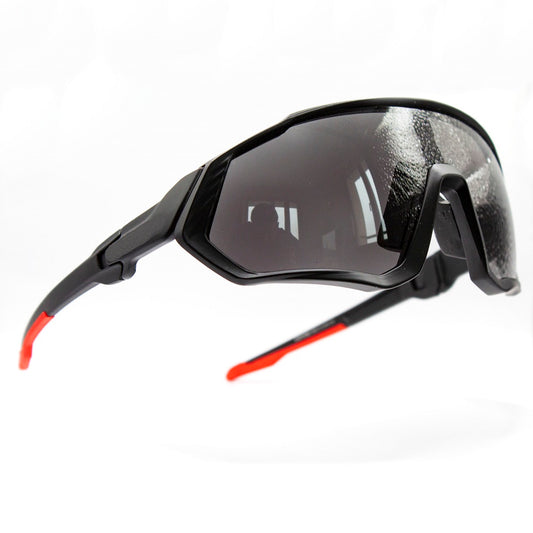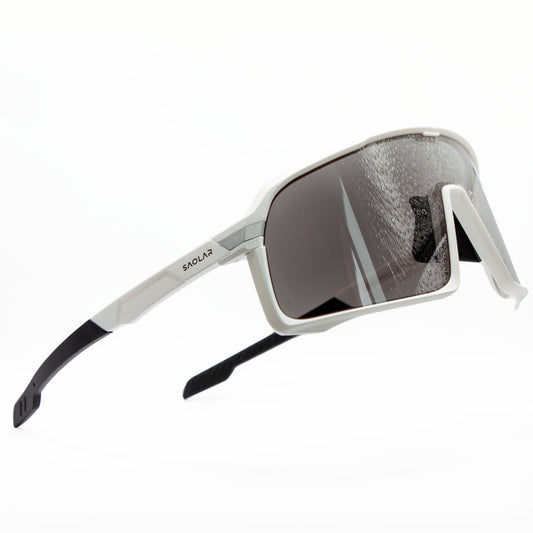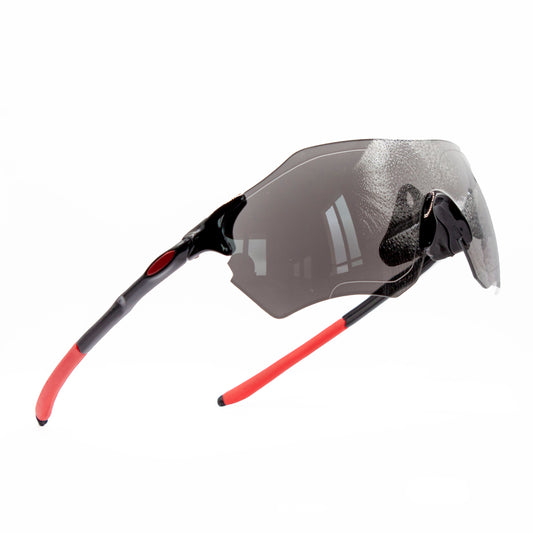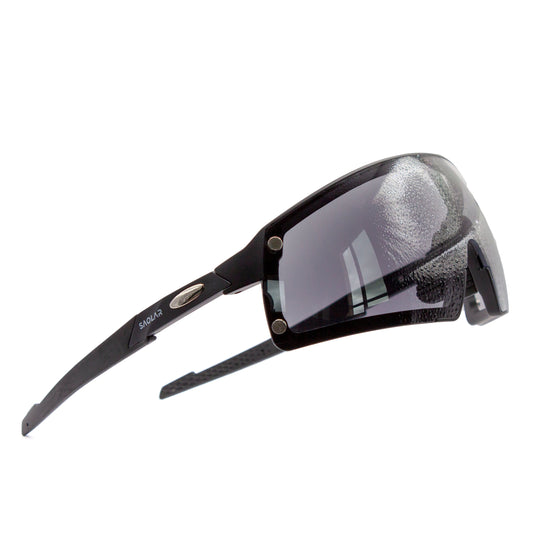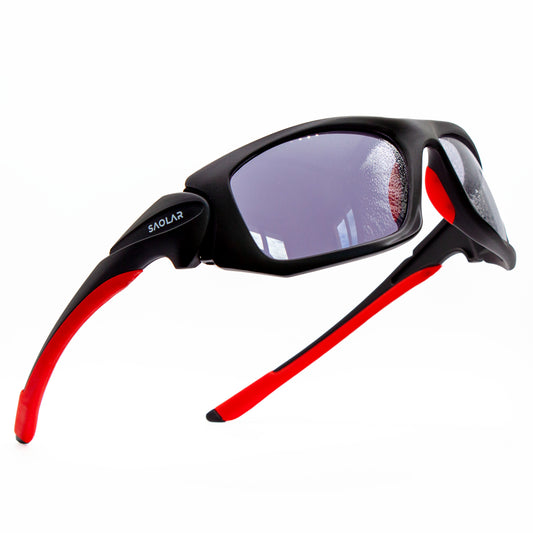Introduction
Knee pain is a common issue that many cyclists face, with research showing that anywhere between 14.8% to 33% of long-distance riders experience cycling knee pain. Among these, pain at the back of the knee is frequently caused by improper bike fit and poor pedaling mechanics. Fortunately, with proper adjustments and attention to cycling form, you can significantly prevent knee pain in cycling. By understanding the underlying causes and addressing them early, cyclists can enjoy a pain-free riding experience and improve their overall performance.
Main Causes of Back of Knee Pain in Cycling
Cycling can be a highly effective and enjoyable form of exercise, but many cyclists experience knee pain—especially at the back of the knee. This discomfort can often be traced to a few key issues, primarily linked to bike fit, pedaling mechanics, and cleat positioning. Understanding these factors and making the necessary adjustments can help you prevent knee pain in cycling and continue riding comfortably.
Improper Bike Fit
One of the most common reasons cyclists experience back of knee pain is an improper bike fit. A poorly adjusted saddle can have a significant impact on your knee alignment, leading to strain and discomfort during or after rides.
- Saddle Height: If your saddle is positioned too high, it can cause your legs to overextend during the pedal stroke. This overextension places additional strain on the hamstrings and calves, which in turn leads to tightness and pain at the back of the knee. Lowering the saddle to an appropriate height can alleviate this issue. A general rule is to adjust the saddle so your knee remains slightly bent at the bottom of the pedal stroke. For cyclists who face this issue regularly, it may be beneficial to get a professional bike fit to ensure the saddle height is optimized for your body.
- Saddle Position: Not only can the height of the saddle cause issues, but its forward and backward positioning can also influence knee pain. A saddle positioned too far back may force you to overextend at the bottom of the stroke, aggravating the tendons behind the knee. On the flip side, a saddle positioned too far forward can compress the knees. Finding the balance between height and position is essential for preventing discomfort.
For additional tips on maintaining your bike, check out Top Sealant Mistakes Cyclists Make & How to Avoid Them.
Cleat Position and Float
Another frequent cause of back of knee pain stems from the placement of your cleats and the amount of float (the degree to which your foot can move laterally while clipped in). Cleats that are positioned too far forward place undue pressure on the calf muscles, which can lead to pain at the back of the knee.
- Cleat Position: When cleats are set too far forward on the shoe, the increased torque on the calves transfers strain to the back of the knee. Moving the cleat back toward the heel can reduce the force exerted on the calves, thereby lessening knee pain. It’s important to test small adjustments over a few rides to determine the optimal position.
- Cleat Float: The amount of float plays a significant role in how your knees move during the pedal stroke. Too much or too little float can disrupt your pedal motion and cause misalignment of the knee joint. Misalignment not only leads to cycling knee pain, but it can also increase the risk of long-term injuries. Ensure that your cleats allow for just enough float to enable natural foot movement without excessive motion.
Pedaling Mechanics
Poor pedaling mechanics are another frequent culprit behind back of knee pain in cycling. Pedaling at too low a cadence, or in a high gear, puts extra strain on your knees, as it forces your muscles and tendons to work harder than necessary.
- Cadence: A smooth, efficient pedaling motion can significantly reduce the strain placed on your joints. Cycling at a lower cadence (fewer revolutions per minute) in a high gear means your knees are absorbing more of the workload. On the other hand, increasing your cadence by shifting to a lower gear reduces the pressure on your knee tendons and muscles, promoting smoother motion. By finding the right cadence, you can reduce your risk of knee pain.
Maintaining a steady cadence is crucial for both power output and injury prevention. Understanding when and how to shift gears to preserve momentum while reducing joint stress can go a long way in preventing back of knee pain. Additionally, strengthening the supporting muscles like the core and glutes can improve your cycling efficiency and help maintain proper pedal mechanics.
Cyclists frequently experience back of knee pain due to a variety of factors, the most common being improper bike fit, cleat positioning, and poor pedaling mechanics. Thankfully, these issues are preventable with the right adjustments and regular maintenance. Ensuring that your saddle height, cleat position, and cadence are optimized will help you enjoy a pain-free cycling experience. Always be mindful of your form, and consider a professional bike fit if the pain persists.
For more tips on how to enhance your cycling performance and avoid injuries, explore our related articles like Top Sealant Mistakes Cyclists Make & How to Avoid Them and Mountain Biking Nutrition: Essential Fueling Tips.
How to Prevent Back of Knee Pain in Cycling
Experiencing back of knee pain during or after cycling is a common issue, but it’s one that can often be prevented with the right approach. By making necessary adjustments to your bike fit, incorporating strength training and flexibility exercises, and gradually increasing your mileage, you can avoid knee strain and enjoy a more comfortable ride. Let’s explore these essential steps to prevent knee pain while cycling.
Optimizing Bike Fit
One of the key factors in preventing cycling knee pain is ensuring that your bike is properly fitted to your body. Saddle height is one of the most critical aspects of bike fit, as an incorrect height can lead to either overextension or excessive compression of your knee joints. Setting the saddle too high can overextend your hamstrings and calves, causing tension and strain at the back of the knee. On the other hand, a saddle set too low can compress your knee, leading to discomfort.
- Saddle Height: To find the correct saddle height, adjust it so that your knee remains slightly bent at the bottom of the pedal stroke. This allows for proper joint movement and reduces the risk of strain.
- Handlebar Reach: Another important adjustment is handlebar reach. If the handlebar is too far away, it can cause improper posture, which may affect knee alignment and lead to pain. Ensuring a comfortable reach that doesn’t cause you to overstretch will prevent unnecessary strain on your knees, especially during long rides.
For more tips on maintaining a comfortable and secure cycling setup, check out Top 5 Best Bike Locks for 2025: Secure Your Ride Today.
Strength Training and Flexibility
Incorporating strength training and flexibility exercises into your routine can greatly reduce the risk of knee pain. Stronger muscles, especially in the core, hamstrings, and glutes, provide better support for your knee joints, allowing for smoother, more controlled pedaling mechanics. When these muscles are weak, your knees have to bear more of the workload, which can lead to overuse injuries and pain.
- Hamstring Strength: Strengthening your hamstrings is particularly important because these muscles play a major role in stabilizing the knee during cycling. When they are weak, other muscles, such as the calves and quads, may overcompensate, leading to strain behind the knee.
- Core and Glute Strength: A strong core and glutes are also essential, as they help to maintain proper posture and alignment on the bike. This not only prevents unnecessary stress on your knees but also enhances overall cycling performance. Exercises like planks, squats, and lunges can be beneficial in building strength in these areas.
- Flexibility: Regular stretching of the hamstrings, calves, and hip flexors can improve flexibility and reduce tension in the muscles that support the knee. This is especially important for cyclists who engage in repetitive motion for extended periods.
Gradually Increasing Mileage
Another common cause of back of knee pain is ramping up your cycling mileage or intensity too quickly. When you increase the load on your muscles and joints too fast, your body doesn’t have time to adapt, which can lead to overuse injuries. To avoid this, it’s essential to increase your mileage gradually.
- Gradual Progression: Experts recommend increasing your mileage by no more than 10% per week. This gradual increase allows your muscles, tendons, and joints to adapt to the added stress without being overloaded. It’s also important to include rest days in your training schedule to give your body the time it needs to recover and strengthen.
- Balanced Training: In addition to pacing your mileage increases, balancing your workouts with strength training, cross-training, and flexibility exercises can help prevent overuse injuries. This holistic approach ensures that your body is well-prepared for the demands of cycling, reducing the likelihood of knee pain.
For insights on how to properly fuel your rides as you increase intensity, check out Mountain Biking Nutrition: Essential Fueling Tips.
By optimizing your bike fit, incorporating strength training and flexibility, and increasing your mileage gradually, you can effectively prevent back of knee pain and enjoy cycling without discomfort. Taking these proactive measures will not only enhance your performance but also ensure that your rides are both enjoyable and pain-free.
How to Treat Back of Knee Pain
If you're experiencing back of knee pain while cycling, it's essential to take immediate action to alleviate the discomfort and prevent it from recurring. The treatment approach typically involves adjusting your bike setup and incorporating targeted stretching and strengthening exercises. Let’s explore these effective strategies to help you get back on track without pain.
Adjusting Your Setup
The first step in treating cycling knee pain is to make small adjustments to your bike setup. Often, minor changes can significantly reduce pain and discomfort during your rides.
- Saddle Adjustment: Start by checking the height of your saddle. If it’s too high, it may cause overextension of your knee at the bottom of the pedal stroke, leading to pain. Lower your saddle by a small increment—generally no more than half a centimeter—and test the new height over a couple of rides. Ensure that your knee remains slightly bent at the lowest point of your pedal stroke.
- Saddle Position: Next, evaluate the fore-aft position of your saddle. If your saddle is set too far back, it can force you to overextend during the pedal stroke. Adjust it forward gradually, again testing the new position to find a comfortable fit.
- Cleat Position: Adjusting your cleats can also help alleviate knee pain. If your cleats are set too far forward, they can put additional strain on your calves and contribute to discomfort behind the knee. Move the cleats toward your heel to decrease the torque on your knees. Ensure that the cleat float allows for natural movement without excessive lateral motion.
- Regular Checks: After making adjustments, monitor how your knees feel during and after rides. Consistently checking your setup can help you identify any changes that might lead to discomfort, allowing you to address issues before they escalate.
For further insights on maintaining your bike setup, read Top Sealant Mistakes Cyclists Make & How to Avoid Them.
Stretching and Strengthening Exercises
In addition to adjusting your bike fit, incorporating specific stretching and strengthening exercises can greatly alleviate back of knee pain and prevent its recurrence.
- Stretching: Focus on stretching your hamstrings, calves, and hip flexors regularly. Tightness in these muscle groups can exacerbate knee pain. Here are a few effective stretches:
- Hamstring Stretch: Sit on the ground with one leg extended and the other bent. Reach towards your toes on the extended leg, holding for 20-30 seconds. Switch legs and repeat.
- Calf Stretch: Stand facing a wall, place one foot behind you, and lean into the wall, keeping your back heel on the ground. Hold for 20-30 seconds and switch legs.
- Hip Flexor Stretch: Kneel on one knee with the other foot in front. Push your hips forward gently while keeping your back straight. Hold for 20-30 seconds on each side.
- Strengthening Exercises: Strengthening the muscles around your knees can provide better support and stability. Include the following exercises in your routine:
- Bridges: Lie on your back with your knees bent. Lift your hips towards the ceiling, squeezing your glutes at the top. Hold for a moment and lower back down. Aim for 10-15 repetitions.
- Planks: Hold a plank position for 20-30 seconds to strengthen your core, which helps maintain proper posture while cycling.
- Squats: Stand with your feet shoulder-width apart and lower into a squat, ensuring your knees don’t extend past your toes. Start with bodyweight and gradually add resistance as you gain strength.
Incorporating these exercises into your weekly routine will enhance your overall strength and flexibility, reducing the likelihood of knee pain while cycling.
Treating back of knee pain involves making adjustments to your bike setup and incorporating stretching and strengthening exercises into your routine. By fine-tuning your saddle and cleats and focusing on targeted exercises, you can alleviate discomfort and prevent future issues. Remember to listen to your body and make necessary adjustments as needed, ensuring that your cycling experience remains enjoyable and pain-free.
When to Seek Professional Help
While many cases of back of knee pain can be addressed through adjustments and at-home treatments, there are certain signs that indicate it's time to seek professional help. Ignoring these symptoms can lead to more serious issues and prolonged discomfort.
Signs You Need a Professional Bike Fitting
If you experience persistent knee pain that doesn’t improve with minor adjustments to your bike fit, it may be time to consult a professional bike fitter. Signs that suggest a need for expert assistance include:
- Persistent Pain: If the pain at the back of your knee continues for several rides despite making adjustments to your saddle height and cleat position, this indicates an underlying issue that needs to be addressed by a professional.
- Swelling: Noticeable swelling around the knee joint can be a sign of inflammation or injury, and it warrants a professional assessment to determine the root cause and appropriate treatment.
- Locking or Catching: If your knee feels like it’s locking or catching during movement, this can indicate problems such as a meniscus tear or other structural issues. These symptoms should not be ignored, as they may require medical intervention.
When to See a Physical Therapist
If you are experiencing symptoms such as those mentioned above, it may be beneficial to consult a physical therapist. Physical therapy can help diagnose the underlying cause of your knee pain and provide you with a tailored rehabilitation program. Key indicators for seeing a physical therapist include:
- Limited Range of Motion: Difficulty in fully extending or flexing the knee can indicate issues that require therapeutic exercises to restore proper movement.
- Increased Pain with Activity: If activities such as cycling, walking, or even climbing stairs exacerbate your knee pain, professional evaluation and treatment may be necessary to prevent further injury.
- Recurrent Issues: If you frequently find yourself struggling with back of knee pain or if it seems to flare up after cycling, this is a strong indication that you should seek professional advice to develop a long-term strategy for management and prevention.
Knowing when to seek professional help for back of knee pain is crucial for preventing further injury and ensuring your cycling experience remains enjoyable. If you notice symptoms like swelling, locking, or persistent pain, don’t hesitate to consult a professional bike fitter or physical therapist. They can help identify the underlying issues and provide effective solutions tailored to your needs.
For a lighter take on cycling, don’t forget to check out Top 30 Best Bike Jokes to Keep Cyclists Laughing to keep your spirits up while you tackle your cycling challenges!
FAQs
What causes back of knee pain during cycling?
Back of knee pain during cycling can be attributed to several factors, including improper bike fit, weak muscles in the lower body, and poor pedaling technique. An incorrectly adjusted saddle or cleat position can strain the knee, while insufficient strength in supporting muscles may lead to overuse injuries.
How can I adjust my bike to prevent knee pain?
To prevent knee pain, focus on optimizing your bike setup. Adjust your saddle height so your knee has a slight bend at the bottom of the pedal stroke. Ensure the cleat position allows for natural foot movement and check that your handlebar reach is comfortable, preventing overstretching.
What exercises can help prevent knee pain in cycling?
Incorporating strength exercises for your hamstrings, glutes, and core is essential for reducing muscle strain and supporting knee mechanics. Exercises like squats, bridges, and planks can enhance strength and stability, helping to prevent cycling knee pain.
When should I see a physical therapist for cycling knee pain?
Consult a physical therapist if your knee pain persists despite making adjustments to your bike setup or if you notice symptoms like swelling or locking in the knee. Professional guidance can help identify underlying issues and provide a tailored treatment plan.



